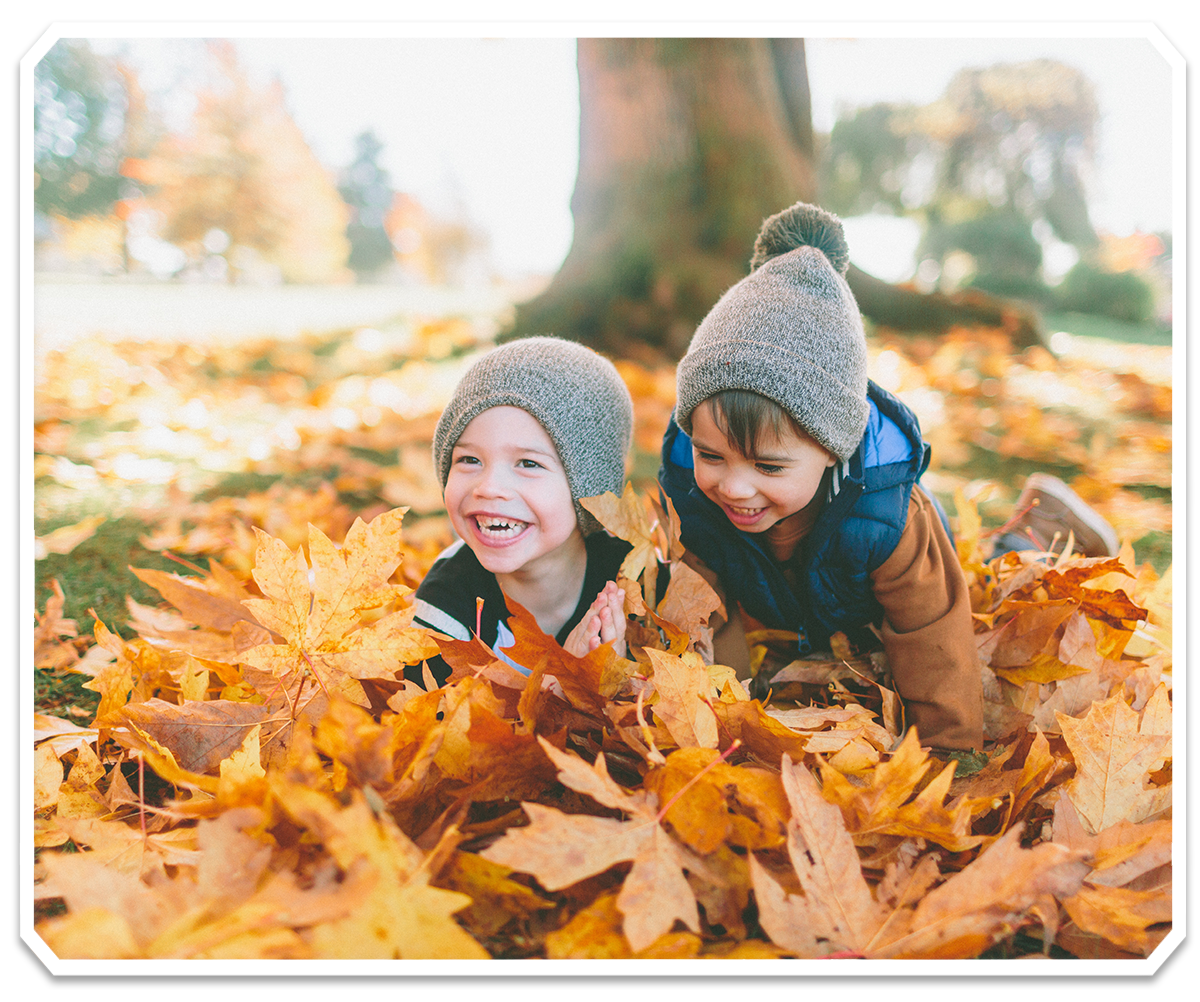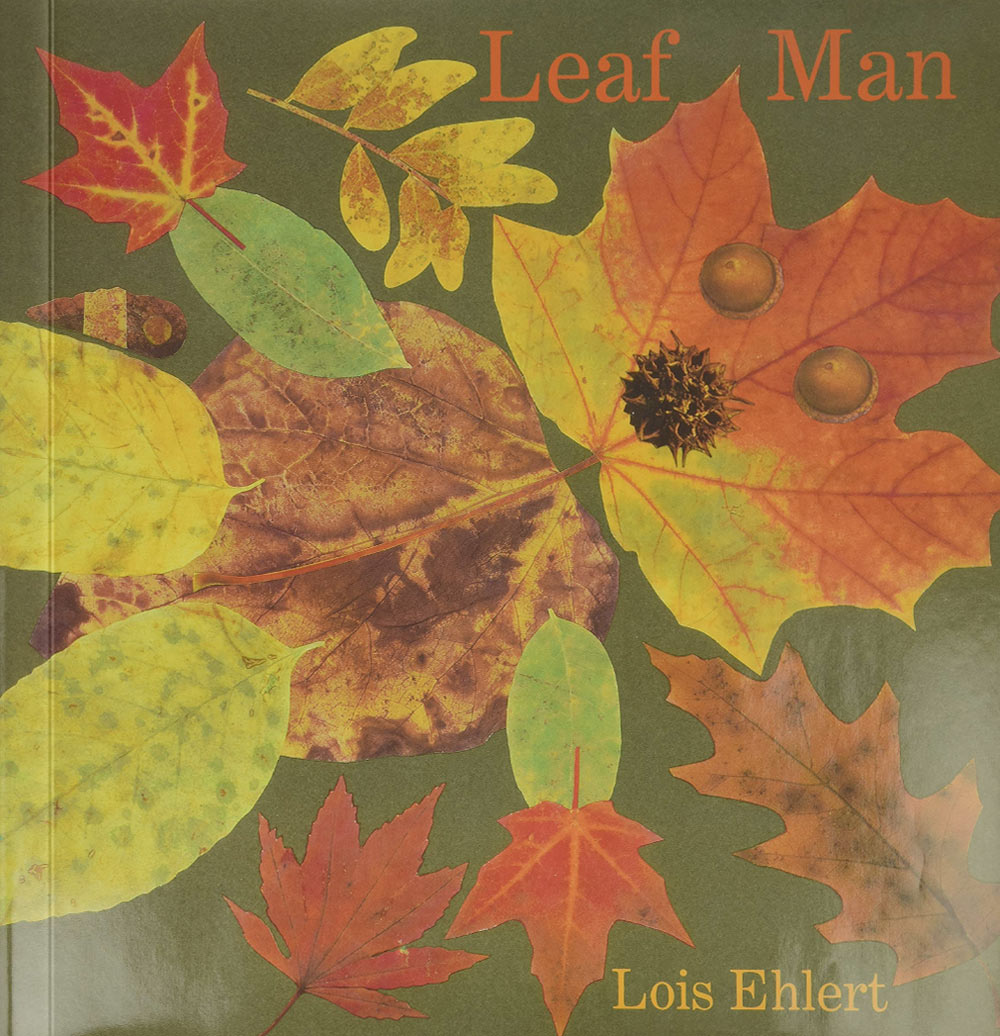ues of orange, red, yellow, and brown fill the landscape as different shapes fall from trees including brown oaks, golden aspens, and red maples. These natural treasures invite children to investigate, discover, and ask questions. Lois Ehlert, author-illustrator of Leaf Man (Harcourt, 2005), understands the interests of young learners and engages their curiosity by providing creative examples of art made with these colorful shapes of autumn.
Raking and collecting leaves provides opportunities for young children to not only observe similarities in the colors, shapes, and sizes of leaves, but also to strengthen motor skills. These activities are definite fall favorites. Rake leaves into a pile, then jump in and have fun. Rake and continue jumping. When everyone tires of jumping, gather a collection of leaves in various colors, shapes, and sizes. From the collection, have each child choose an intriguing leaf to investigate. The flat portion of the leaf is the blade. Feel the blade to determine the texture: smooth, velvety, rough, or bumpy. Point out the vein that runs through the center of the leaf. This is called the midrib. Notice the symmetry of the leaf. Lastly, look at the edge of the leaf. Edges may be smooth or wavy, toothed or rounded. Compare the edges to the edges of other leaves.
Sort
Sort the collected leaves, making piles based on similarities of color, texture, shape, or edges. Count the number of leaves in each pile to compare quantity. Write those numbers on a piece of paper for practice with numeral formation.
Pattern
Make patterns with the leaves in the collection. One pattern may be created by color—orange, brown, yellow, orange, brown, yellow—while another may be created by type—oak, maple, oak, maple. Draw and color the patterns made.
Measure
Some leaves are small. Others are large. Some are wide and squatty, while others are narrow and tall. Notice the differences. Use a ruler to measure the widths and lengths of each leaf to the nearest inch. Place the leaves in order from shortest to tallest or thinnest to widest.
Create
Choose five leaves from the collection. Place the leaf under a sheet of thin white paper. Use the side of a crayon to rub across the paper. Watch as the leaf’s midrib and veins appear. Make an assortment of leaf rubbings to create a nature journal book.
To preserve favorite leaves, place them between two sheets of wax paper and have an adult gently iron with a warm iron, sealing leaves inside.
Mix and Paint
Red and yellow are primary colors. Orange, a secondary color, can be made by combining red and yellow. Use different amounts of red and yellow to experiment with mixing fall paint colors. An egg carton and palette are great places to mix colors. Notice how the shades change as different amounts of each color of paint are added. Use the shades and tints to make leaf prints. To do so, brush a thin layer of paint on one side of the leaf and place a piece of paper on top. Press gently. Any leftover paint can be used to finger paint a tree full of fall leaves.
Read
Lois Ehlert has written many children’s picture books. Locate a copy of Red Leaf, Yellow Leaf (HMH Books for Young Readers, 1991) and enjoy another fall read. This book offers ideas for making a bird feeder and may also create curiosity about sugaring or processing maple syrup.

Create together! Collect a generous selection of leaves in various sizes, shapes, and colors. Place the leaves in the center of the table. Give each family member a sheet of white construction paper on which to create a unique leaf person or animal. Use glue to affix leaves once the creation is finalized. Display the leaf creations.
Observe
Gather around a microscope or give each family member a handheld magnifying glass. Choose different leaves to observe and compare. Have each person draw what he or she sees under the magnifier. Staple or bind the pictures together to create a family leaf book.
Team Work
Gather the family, rakes, and garbage bags. Enjoy raking and gathering leaf piles and shoveling into bags for removal. When the raking and bagging are complete, enjoy a favorite family snack such as s’mores and hot chocolate.
Visit
Plan a visit to a forest area or nature preserve. While walking, compare leaves and tree types to those near home or in the backyard. Observe wildlife and listen for birds or other animal sounds. Take photographs of your family making fall forest memories.
Children love looking at Lois Ehlert’s illustrations of leaf people and creatures. As a result, they will likely ask to collect leaves to make their own leaf art. Grab a paper bag, gather the colors of fall, and have fun!

